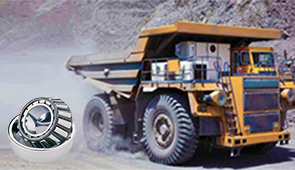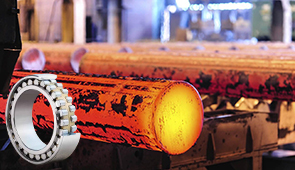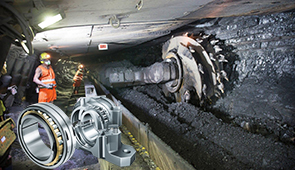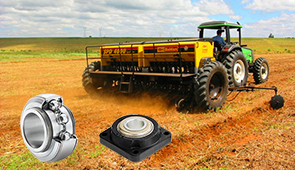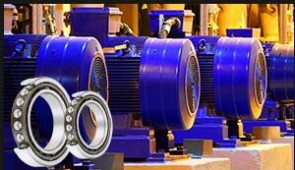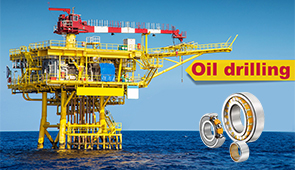Grease and Oil: Understanding Lubricants and Their Differences
When it comes to keeping machinery and equipment running smoothly, lubricants play a crucial role. But with so many options available, how do you choose between grease and oil? While both serve the same fundamental purpose—reducing friction and wear—they differ significantly in their composition, application, and performance. This blog will unravel the key distinctions between grease and oil, helping you better understand their advantages, ideal use cases, and how they impact the efficiency and longevity of your equipment. Whether you’re an industry professional or simply curious about the science behind lubrication, this article will equip you with the insights you need to make informed decisions.
Types of Grease and Oil
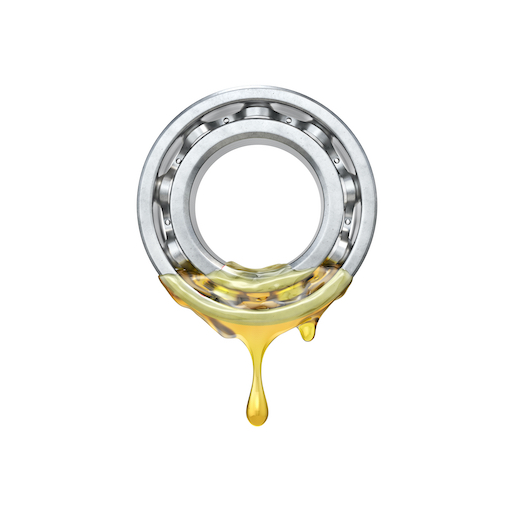
Types of Grease
Grease is a lubricant comprising a base oil, thickener, and additives. It is intended to remain in a place and provide lubrication for a long period under various conditions. The following are the main grease types:
- Lithium Grease: Lithium grease is among the more commonly used types of grease and is considered very versatile as it performs well in high-temperature and high-pressure environments. It is appropriate for automotive, industrial, and household purposes. It gives excellent water resistance and durability.
- Calcium Grease: Calcium base grease does well in wet or marine environments due to its super water resistance. It has comparatively less temperature tolerance than lithium grease, so it is perfect for the likes of boat trailer wheel bearings or any other piece of equipment being exposed to moisture.
- Polyurea Grease: This grease is seemingly applied more in higher temperature setups, such as electric motors. Polyurea grease is very oxidation stable and hence does not require more frequent reapplication, thus making it suitable for sealed, long-lasting systems.
- Synthetic Grease: Synthetic grease is prepared for absolute temperatures and ever-demanding conditions. It lubricates evenly over a wide range of temperatures and finds its use in high-performance machinery, aviation, and automotive systems.
Having a fair grasp of grease types and how each can assist will keep you well-equipped for choosing the right product that will help increase your equipment’s lifespan and performance. A machine properly lubricated runs smoothly, thus lessening wear and upkeep costs in the long run.
Types of Oil
Industrial machinery uses several types of oils, according to specific operational requirements. Mineral oil, synthetic oil, and bio-based oil are the most common types. Mineral oil is derived from crude oil; it is cheaply sold and commonly used. It is a general application oil that would not do well under extreme conditions.
Synthetic oils are prepared by chemical processes to provide top performance under severe service conditions. They have higher thermal stability concerning oxidation and will retain good fluidity even at low temperatures, thus suitable for high-performance engine applications, heavy-duty machinery, and extreme weather conditions. Besides being expensive, mineral oils cannot meet the demands of critical uses.
The bio-based oil variety provides a green alternative, manufactured from renewable resources comprising plant or animal fats. It has the advantage of biodegradability and lowering environmental impact while providing sufficient lubrication in many applications. Bio-oils have started making a rush into the industries emphasizing sustainability and lowering their carbon footprint. Operating conditions, environmental considerations, and performance requirements all factor into choosing the correct type of oil.
Grease vs Oil: Key Differences
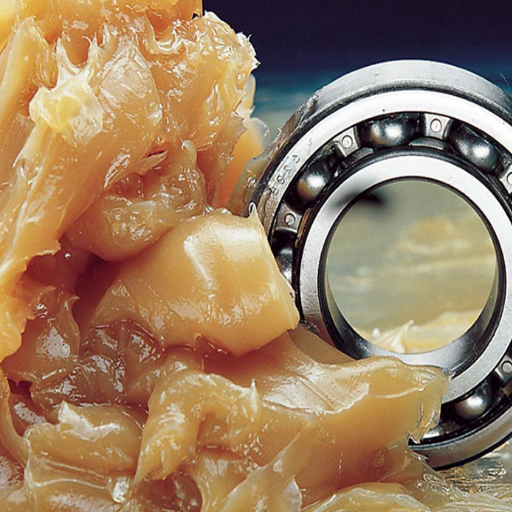
Physical Properties Comparison
Physical properties, when compared to grease and oil, mainly dictate their uses and advantages. Now, grease may have a semisolid state due to the mingling of the base oil with a thickener, which in grease’s case would be either soap-based or nonsoap-based. The greasy lubrication is applied adhesively on the surface of an object requirement for operations where re-lubrication is generally impossible; thus, it usually finds a use in long-term lubrication from medium through heavy loads.
Oil, by contrast, is liquid lubrication, and in essence, has a lower viscosity as compared to grease. This fluidity facilitates heat dissipation, and so oils are suitably employed by high-speed machines and systems where temperature control is crucial. Oils penetrate small spaces and lubricate adequately, reducing friction between precision components.
Another difference lies in the way environmental conditions affect the grease and oil. Since the viscosity is higher, its ability to prohibit contamination is increased. Meanwhile, oil systems require proper sealing or filtration to avert dirt or water contaminants from hampering their efficiency. These variations in physical differences will determine the kind of lubricant needed for a particular industrial application.
Performance Characteristics
When considering performance characteristics, several factors contribute to the lubricating properties of grease and oil. Grease performs best in conditions where the lubricant should provide continued coverage over a lengthy period, since most equipment does not withstand re-application regularly. Its viscosity allows it to stay put, giving lubrication to the componentized loads for very long durations, high-load or high-pressure working situations. Therefore, it is used largely for applications like bearings, gears, and other components with intermittent motion.
Oil offers better heat dissipation compared to grease and lowers friction coefficients, hence being preferred in high machinery, tools, and engines. Being fluid, it helps cool the system, rolling down wear, and flushing away contaminants. The new generation of synthetic oils often comes with additives to give antioxidation, anti-wear, and anticorrosion properties to the oils; this definitely will prolong the life of the equipment.
With respect to industrial applications, the choice between grease and oil will depend mainly on operational requirements, environmental factors, and certain compatibility requirements of the materials concerned. Using state-of-the-art lubrication techniques, industries can bring forth advances in durability and performance with less maintenance-related expenditure.
Common Misconceptions
A common misconception among people is the idea that a lubricant is one size fits. They think any grease or oil will suffice for their machinery, regardless of the operating conditions or specifications. However, lubricants are highly specialized chemicals formed and tested for particular atmosphere types, operating temperatures, and loading conditions. Synthetic lubricants may be suitable for industrial machinery working under high-temperature situations; whereas in the case of heavier machinery working in cold climates, a thicker type of cold-resistant grease may be needed. Using an incorrect lubricant for an application may cause wear, overheating, and premature failure of the equipment.
Another misconception is that once a machine is lubricated, it should not be checked or relubricated for an extended period of time. Although lubricants used these days are meant to last longer, they are not forever. Dirty water, metal particles, are some of the contaminants that get inside and reduce the effectiveness of the lubricant, and sometimes may be more harmful than good. Checking the condition of oil or grease at regular intervals and replacing lubricants in time will help in keeping machines at optimum efficiency and result in prolonged operating life. Failure to do this can engender unanticipated maintenance costs and expensive repairs.
The last misconception is that something extra being used will shorten lubricant life or enhance performance and protection. Over-lubrication issues can be as serious as under-lubrication. Too much grease or oil heightens operating temperature, leakage, and even seal and bearing damage. Proper lubrication depends on correct application in terms of quantity and method relative to the equipment involved. Manufacturer recommendations and thorough periodic lubrication audits should curb such occurrences and keep equipment running smoothly while reducing long-term expenses.
Applications of Grease and Oil Across Industries
Automotive Industry Uses
Grease and oil play a paramount role in the reliability and life span of automotive components. Engine oils provide lubrication to reduce friction between moving parts, thereby reducing wear and tear and improving fuel efficiency. High-performance greases are generally applied in wheel bearings and chassis joints to provide a long-lasting shield against moisture, dirt, and extreme heat. This, in turn, prevents mechanical failures and assures the smooth functioning of vehicles under diverse driving conditions.
Modern automotive systems are adopting newer advanced lubricant technologies with the pace of changing efficiency and environmental considerations. Synthetic oils and greases, for instance, are quite popular because they offer the best thermal stability, resistance to oxidation, and ability to perform well under extremes of temperature. The lubricants are also imperative for EVs, in assuring effective functioning of electric motors, gears, and bearings needing precision lubrication to withstand high-speed performances with minimum energy loss.
Another help for providing automotive sector is data-driven maintenance approaches, like predictive lubrication management. In this method, automotive manufacturers and fleet operators identify lubrication deficiencies before major repair or downtime with IoT sensors and real-time monitoring. This approach limits reliability problems and extends service intervals, making the systems more sustainable and cutting environmental implications. All through, grease and oil have always been the means of enhancing vehicle performance and reducing vehicle system costs, from private to commercial fleets.
Manufacturing and Industrial Applications
Grease and oils, having a fundamental role in the realization of manufacturing and industrial processes, ensure the smooth running of various machines while also ensuring efficiency. These lubricants reduce the friction between components and wear out, so that the life of the equipment is extended, energy consumption is lowered, and maintenance costs are alleviated. Below are five important applications that need grease and oil:
- Metalworking and Machining: Lubricants are applied during the piercing, grinding, and shaping of metals to reduce heat and friction and improve precision and the life of cutting tools. Research indicates that proper lubrication can increase tool life by up to 40%.
- Maintenance of Heavy Equipment: Industrial equipment such as excavators, cranes, and conveyors uses high-performance greases to operate under extreme pressures and high temperatures. Adequate lubrication promotes durability and cuts down unplanned shutdowns by 30%.
- Textile Manufacturing: Lubricants help to reduce friction during the spinning, weaving, and sewing stages. Constant lubrication improves the finished fabric quality and lowers machine-related failures.
- Food and Beverage Processing: Food-grade greases and oils are used on machines to conform to safety standards while providing for efficiency. They have been chemically treated not to contaminate foods, but to provide excellent lubrication to mixers, conveyor belts, and packaging machines.
- Energy Production: Lubricants in wind turbines, hydropower, and conventional power plants are known to guarantee the rapid operation of turbines, generators, and mechanical components to the point that losses due to component failure can be avoided. Accordingly, studies show that a lubricant can increase energy by 15%.
With these applications, grease and oil stand as important factors in any manufacturing and industrial process, ensuring that they remain reliable, efficient, and cost-effective across a wide variety of industries.
Machinery Maintenance Insights
Lubrication is indeed very relevant to the maintenance of machines. From my point of view, proper lubrication of turbines, generators, and other machinery will enhance efficiency and prevent unexpected breakdown of equipment. Studies have backed this by saying that using the right lubricant can improve the efficiency of energy use by 15%, which is quite a substantial increase in any industry or manufacturing process. Failure to consider this would induce downtime, repair damages, and a lack of production capability.
My emphasis would be placed on considering temperature, load capacity, and speed of the equipment for lubricant selection. Industrial greases and oils are of many kinds, and using the right one helps achieve the best results. Replacement of the lubricant after regular monitoring keeps machinery alive and able to work, minimizes interruptions in operations, and provides greater component life.
In my experience, a reactive approach is the best for implementing overall cost reduction and reliability. When equipment is lubricated under well-designed control, harmonious follow-ups are guaranteed, and timely interventions avoid extensive damage. Hence, couching all these activities under maintenance serves as a time- and cost-saving measure while serving as a pillar in advancing any industrial operation in the long run.
Benefits and Drawbacks of Using Grease and Oil
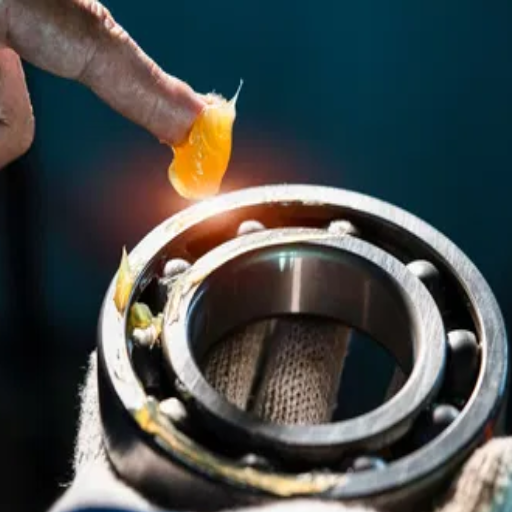
Advantages of Grease
- Longer Lubrication Intervals: Grease generally adheres more to a surface than does oil; thus, grease provides a longer-lasting lubrication depending on the application of the component to be lubricated. Hence, there is a reduced frequency of reapplication, which increases maintenance efficiency.
- Resistance to Contamination: While oil is the choice of lubrication rooms for applying, it needs to be, in any case, protected against the ingress of contamination like dust and dirt. Since grease is thick, it can better seal its film against contaminants like dirt, dust, and water. This feature becomes ever more necessary in severe environments.
- Providing Extreme Conditions: With a greasy surface, extreme pressure, shock load, or low speed performance will be at its best. An oil would fail in extreme conditions, but grease would still be able to provide the lubrication.
- Prevents Leaking of Lubricants: Oil lubricants easily get into the leakages of the equipment, but this will not be the case with grease lubricant, as wastes are minimized due to leakage, cleaning is reduced, and labor is saved.
- Incorporation of Additives: Grease may have additives such as corrosion inhibitors and extreme pressure (EP) additives, which improve its protection properties and increase the service life of the components of machinery.
Advantages of Oil
- Heat Dissipation: Oil can transfer heat from machinery components into the atmosphere efficiently due to its liquid nature and circulation capacity. This keeps these components from overheating during high-powered tasks and allows them to function at optimum temperatures.
- Less Friction: Oil lubricates at a very low friction, thus causing less wear and tear on the moving components, which in turn makes for increased speed and efficiency of machinery and longer operating life.
- Ease of Use: Unlike grease, oil can travel into tight and hard-to-reach areas, lubricating tiny components within machinery. This advantage enhances the practicality of precision-based systems.
- Clean-Up of Contaminants: During operation, circulating oil removes contaminants such as dirt, debris, and metal particles from the surfaces of machinery. This action prevents damage to components from occurring and allows the system to run smoothly.
- Wide Range of Operating Temperatures: Oil extinguishes the adverse effects over a very wide temperature range, be it is cold or really hot situations. This makes oil very dermatologist in spades worth for many Industrial applications where varying thermal conditions are encountered.
Limitations of Each Lubricant Type
- Oil-Based Lubricants: Though oil-based lubricants fare very well in friction reduction and machinery protection, they do carry some drawbacks. One major limitation is the contamination by the environment; that is, dust or water, or chemicals may get absorbed in them, leading to their breakdown by the passage of time. Also, an oil leak presents an environmental hazard and calls for special measures to prevent spillage from entering ecosystems. Periodic checks and replacements can also be mandatory for the enhancement of the working of the same, thus increasing operational costs.
- Grease-Based Lubricants: Due to their viscous texture, grease lubricants are considered the best long-time lubricants for heavy machinery. Dust and dirt contaminants can shorten the machinery’s life dramatically if grease is not removed or replaced at specific times. Another disadvantage is that in freezing temperatures, grease can harden and work against lubrication, or high temperatures may turn the grease to a flow state, hindering lubrication in extreme conditions.
- Solid Lubricants: Graphite and molybdenum disulfide offer excellent lubrication or performance at high temperatures, but their applicability is limited to particular cases, which means they need very exact application procedures, which might in some cases be a prohibitive cost to some operations. The fact that they cannot flow slowly over a surface as a liquid or grease surely limits their applicability to dynamic systems with wall motions and moving parts.
- Synthetic Lubricants: Synthetic lubricants, while offering more advanced performance at the extreme heat or cold side of nature, usually tend to be more costly than natural oils or greases. Therefore, their higher cost resists introductions, especially in operations where cost is the main factor. Also, in some cases, certain synthetic lubricants may be incompatible with traditional sealing materials, thus engendering issues such as premature seal wear or outright failure.
Being conversant with such limitations in the selection of lubricants will always aid in determining the most suitable lubricant for a particular application and issues related to operational efficiency.
Choosing the Right Lubricant
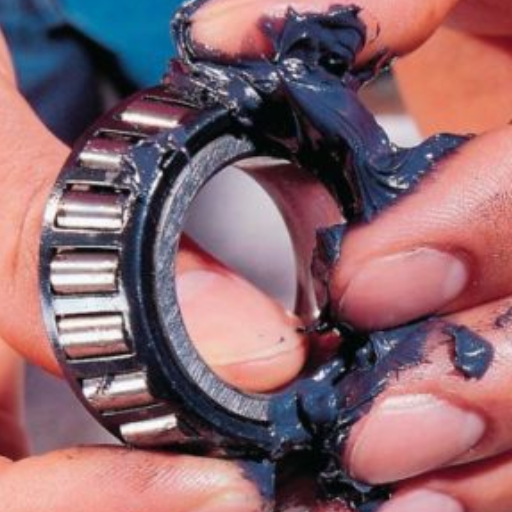
Factors to Consider When Selecting Grease
Selecting the right grease for an application is essential, and numerous factors have to be considered when looking at grease so that there is optimum performance and reliability. The major consideration is the range of operating temperatures of the equipment. The greases are made of some particular crude oils and thickeners, and hence their temperature stability varies; therefore, grease, which is suitable for rating under the maximum and minimum temperatures under normal operation, must be selected so that in extreme situations, it will not degenerate or harden. The other consideration is the load; heavy-load applications require the use of greases with extreme-pressure additives that will avert wear and maintain a film on the affected components.
Compatibility of grease with certain materials, such as seals or bearings, is necessary to preclude damage or chemical reactions that could cause premature failures in these materials. Depending on environmental conditions where the equipment operates, grease selection may vary. For example, spreading water and dust in a rather contaminated ambiance calls for water-resistant greases that will still be efficient in lubrication. Besides, grease replenishment intervals must be considered; these depend on other parameters, including shear stability and speed rating of the application.
Conversely, if all these matters are conscientiously considered, a balanced selection of grease is ensured, thus guaranteeing the longest possible life of equipment, reduced downtime, and increased efficiency in industrial and mechanical applications.
Factors to Consider When Selecting Oil
In order to give maximum performance and life to a machine or equipment, selecting the proper oil is of utmost importance. Several major criteria need to be considered:
- Viscosity: Viscosity is a key characteristic describing the resistance of oil to flow. The appropriate viscosity grade has to be selected to ensure proper lubrication and thereby diminish friction and wear between mechanical components. The oil must fall within the viscosity range recommended by the manufacturer for the respective application.
- Operating Temperature Range: The oil must be able to handle the temperatures it is exposed to during operation. In high-temperature environments, enhanced thermal stability may be needed, while in colder conditions, oils with low pour points have to ensure easy flow.
- Additive Compatibility: Additives serve various purposes, such as improvements in load-carrying capacity, better wear protection, oxidation resistance, corrosion inhibition, etc. It is necessary to make sure that selected additives are compatible with the materials used in the application and the specific operational requirements.
- Load and Pressure Requirements: Depending on whether the application is subjected to heavy loads or great pressures, the oil might need the inclusion of a great pressure type additive, intended to avoid metal-to-metal contact and reduce the wear of components.
- Base Oil Type: Oils are obtained from different base stocks, such as mineral, synthetic, or bio-based oils. Each of these types has specific advantages, like synthetic oils, for example, that display higher thermal and oxidative stabilities for more demanding applications.
- Environmental and Regulatory Considerations: If the industry is concerned about sustainability and complying with local laws and regulations, it might be required to use bio-based or biodegradable oils. Also, the less toxic an oil is, the less the environmental impact in the event of a leak or spill.
Considerate balancing of these above-mentioned factors with constant monitoring of oil behavior during service, ensuring maximum efficiency of operation and extended equipment life, along with fulfilling the laid down standard requirements.
Guidelines for Optimal Lubrication
For best lubrication performance, a methodical approach must be taken for each specific piece of machinery and operating environment. The selection of a lubricant depends on operating temperature, load, speed, and other environmental parameters. The safest route, in most instances, is to use an oil or grease as per recommendation, for it has been designed for that particular application.
Monitor the condition of your lubricant regularly through oil analysis, or at the very least, a visual inspection, in order to detect some form of contamination, wear particles, or degradation. These measures serve as a form of prevention, allowing one to spot problems before they give rise to expensive downtime and equipment damage. During operation, lubrication intervals will have to be strictly observed and recorded, since lubricant overdosing and underrating sadly lead to inefficient operation or outright hardware failure.
Use modern lubrication systems, like automated lubrication technologies, to assure consistency and reduce manual labor. Precision and consistency define the industrial setting and therefore value these lubricant systems greatly. Also, give thought to the storage and handling practices for lubricants: keeping them housed in clean, temperature-controlled environments will not only deter contamination but will also maximize their working life.
Being the last step, the maintenance team can undergo training on all new lubrication practices and technologies. This will ensure lubrication continues to contribute effectively toward the long-term efficiency and reliability of the machinery when paired with a well-maintained foundation of information.
Frequently Asked Questions (FAQ)
Q: What is the difference between grease and oil?
A: The primary difference between grease and oil lies in their composition and intended use. Grease is a thickened lubricant that often includes thickeners such as lithium or calcium soaps, while oil is a more fluid lubricant, commonly used to reduce friction between moving parts. Grease is often used in situations where it needs to stay in place, such as in bearings, while oil is preferred in applications where it can flow freely.
Q: What types of grease are commonly used in machinery?
A: There are several types of grease commonly used in machinery, including lithium-based grease and calcium grease. Lithium-based grease is often favored for its high viscosity and resistance to water, making it suitable for a variety of applications. Calcium grease, on the other hand, is typically used in marine environments due to its water-resistant properties.
Q: How does bearing grease differ from regular grease?
A: Bearing grease is specifically formulated for use in bearings, providing optimal lubrication and protection against wear and rust. It often has a higher viscosity to ensure it stays in place under pressure and can contain additives like molybdenum disulfide to enhance performance. Regular grease may not have the same level of protection or performance requirements as necessary for bearings.
Q: What is the role of a grease gun?
A: A grease gun is a tool used to apply grease into hard-to-reach areas, such as bearings and joints in machinery. It allows for precise application of grease, ensuring that the lubricant used to lubricate moving parts is delivered effectively. This helps reduce friction and wear, prolonging the service life of equipment.
Q: Can vegetable oil be used as a lubricant?
A: Yes, vegetable oil can be used as a lubricant in certain applications, especially in DIY projects or when a natural lubricant is desired. However, it may not perform as well under high temperatures or heavy loads compared to synthetic or mineral oils. It is important to consider the specific requirements of the application when choosing between vegetable oil and grease.
Q: How do thick oils compare to grease in terms of lubrication?
A: Thick oils and grease both serve the purpose of lubrication, but they operate differently. Grease, with its thickening agents, stays in place and provides a more enduring barrier against friction and wear. Thick oils, while viscous, can flow more easily and may not adhere as well to surfaces, making them less effective in high-pressure applications where a solid lubricant is required.
Q: What are the effects of water on grease?
A: Water can significantly affect the performance of grease, often leading to contamination and reduced lubrication effectiveness. Grease that is resistant to water, such as lithium-based varieties, is designed to maintain its integrity even in wet environments, while other greases may wash away or become less effective when exposed to moisture.
Q: Why is high viscosity important in lubricants?
A: High viscosity in lubricants is crucial for applications that involve heavy loads or high temperatures. It ensures that the lubricant remains effective under pressure, forming a protective film between moving parts. High-viscosity greases are particularly useful in machinery and automotive applications where metal-to-metal contact occurs frequently.
Q: How is silicone grease different from lithium grease?
A: Silicone grease is a type of lubricant that contains silicone as its base, providing excellent water resistance and thermal stability. It is often used in high-temperature applications and is compatible with a wide range of materials. Lithium grease, on the other hand, is known for its superior mechanical stability and is commonly used in automotive and industrial applications. Each type serves different purposes based on environmental and mechanical requirements.
UCTH213-40J-300 with Setscrew(inch)
CNSORDERNO: Normal-duty(2)
TOGN: UCTH213-40J-300
SDI: B-R1/8
SD: 2 1/2
UCTH212-39J-300 with Setscrew(inch)
CNSORDERNO: Normal-duty(2)
TOGN: UCTH212-39J-300
SDI: B-R1/8
SD: 2 7/16
UCTH212-38J-300 with Setscrew(inch)
CNSORDERNO: Normal-duty(2)
TOGN: UCTH212-38J-300
SDI: B-R1/8
SD: 2 3/8
UCTH212-36J-300 with Setscrew(inch)
CNSORDERNO: Normal-duty(2)
TOGN: UCTH212-36J-300
SDI: B-R1/8
SD: 2 1/4
UCTH211-35J-300 with Setscrew(inch)
CNSORDERNO: Normal-duty(2)
TOGN: UCTH211-35J-300
SDI: B-R1/8
SD: 2 3/16
UCTH211-34J-300 with Setscrew(inch)
CNSORDERNO: Normal-duty(2)
TOGN: UCTH211-34J-300
SDI: B-R1/8
SD: 2 1/8









